The Vermont Aerospace company seemed an unlikely candidate for turnaround success let alone a future winner of the TMA’s Small Company Turnaround of the Year Award. When the turnaround team walked in the door, it found no cash for payroll and operating expenses, broken and unrepaired equipment and machinery, cancelled customer orders from its largest customer, FBI and Department of Labor investigations and employees reeling from the unexpected death of the owner. The company was ready to shut down and lay off all its employees.
Instead, the team led by Jeff Sands of Dorset Partners, Jon Verbeck of Verbeck Associates, Larry Schwoeri of American Industrial Acquisition Corporation (AIAC) and attorney Kristin Wainright of Tobin, Carberry, O’Malley, Riley and Selinger, purchased the company from the employee owners, restructured the business and transformed it into a profit-making enterprise. Although the ESOP was disbanded, none of the employees lost their jobs.
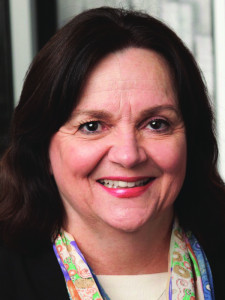
Attorney Cathy Reece of Fennemore Craig in Phoenix moderated a panel discussion with the turnaround team to learn exactly how this exceptional restructuring was enacted. TMA provided ABF Journal with a transcript of the discussion.
REECE: Jeff, first tell us what is the business of Vermont Aerospace and how long had it been in business?
SANDS: Vermont Aerospace was founded in 1980, and for 30 years they were a success story. They are located in a region in Vermont in the Connecticut River Valley that was known for precision machinery back in the 1800s. Most of that work has left New England, but Vermont Aerospace held on to great craftsmen who have been doing this work for 35 years. Many of their products are used in aerospace defense, including critical parts in the GAU machine cannon, which proved valuable in pushing ISIS out of Iraq and Syria. They had sold into a full 100% ESOP (employee stock ownership plan) in 2010-2011, so the last six years leading up to the turnaround their decline was under ESOP ownership. Their revenue peaked at $45 million, and when I was brought in, it had sunk down to $10 million.
REECE: When you stepped into this crisis, what did you identify as the most immediate problems and their solutions?
SANDS: It was really a mix. The CEO had died unexpectedly the day before I got in, and everyone was rattled emotionally. Beneath that, the company didn’t have any money, the largest customer, that represented 40% of its business, had stopped sending in new orders and new RFQs, and they were winding up their backlog. Much of the machinery was inoperable, morale was shot and there was no accountability with management. Cash and the CEO’s death were the two biggest things. As you can imagine, employees, customers, vendors and the bank all wanted confidence, certainty and transparency immediately, which is what I set out to give them.
REECE: How long did it take you to figure out this was a viable business?
SANDS: The products and the customers were great. If we could keep them, it was viable. Within two weeks we came to the realization we could probably save the business on our own organically and muscle through. But it would be low odds, high risk and probably five years of extreme poverty. The other option was to seek a strategic vendor to help keep us alive and give the company the financial footing, which is ultimately what the ESOP chose to do.
REECE: What did the lender require and how were those discussions?
SANDS: They called me and said, “Here is what happened earlier today. Can you be there tomorrow?” What they really wanted was control and transparency. They wanted someone to clamp down on the checkbook, figure out the options and try to prioritize them. We were already in workout at that point, and they wanted to be able to report to the credit committee about what is going on; here is the cash balance and here are the steps going forward. That’s what we did for the lender immediately. The liquidation analysis showed they were going to have a deficiency so we went about trying to figure out how to get beyond that.
REECE: What did you do to get the employees to calm down and stay?
SANDS: The employees thought it was over and that I was sent to close it down. When I walked into the factory for our first meeting, they told me afterwards they thought they were going to lose their jobs. I told them that there was a viable company here. We can save this and we can save your jobs, but everyone has to step up immediately. I’ll take care of the banks, you take care of the customers and vendors, but you all have to do your jobs. That’s what you’re hired for. I don’t know what happened to the work ethic, but you have to bring it back immediately, and they did. They really stepped up. They are the heroes in this whole story. They became different people when they had to.
REECE: With the CEO no longer there, did you have reliable management or did you promote from within? What did you do to solve the management problem?
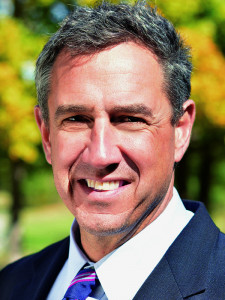
SANDS: We had really good management. There was a lot of family. Don’s brother Scott was in charge of sales, and he had a fantastic relationship with the customers. He and I were able to give the customers confidence and security. We had to bring in a new operations person because we didn’t have any confidence in who was there. We also had an egregious quality issue with the biggest customer, and they made it very clear to me that there was one person remaining who they didn’t trust, so that person was fired that afternoon. We brought in a quality professional that we’ve used in the past as an interim consultant and that gave the customer the confidence to move forward with us.
REECE: What did you do about the immediate cashflow problem? Were you able to continue to borrow from the lender or were you successful in collecting the money as receivables?
SANDS: We weren’t able to get any more money from the bank or other sources, so we immediately stopped paying all the bills, and we were able to come up with cash that way. We went from zero cash and unable to afford payroll, to a couple hundred thousand within a few weeks, which greatly upset the supply chain. Then our issues shifted to keeping the supply chain moving and sitting on their cash and using that to recycle materials and orders through the plant to generate positive cashflow.
REECE: Jon, what were your observations about the cashflow, the solutions for the cashflow and the modeling they had available at the company?
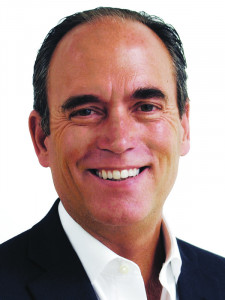
VERBECK: Jeff performed the initial cashflow analysis for the company. I came in with Larry and we developed a consistent process to true up actual cash receipts and cash disbursements and reforecast cash flow on a weekly basis. We also included a weekly sales forecasting process to ensure what we were forecasting to ship was actually shipping. A lot of the financial process improvements made were due to this weekly process. We also put in daily reporting with visibility to cash and accounts receivable. By definition in a turnaround, financial numbers are typically not accurate, so we worked hard on the daily, weekly and monthly processes to improve and get all numbers as accurate as possible.
REECE: And then were you able to speed up the collection on the receivables?
VERBECK: A lot of that was the visibility that Larry and I received from our reporting. When things drifted over, we were both on it immediately. That helped keep payments to terms and speed up historical collections.
REECE: Were there major changes in the cashflow modeling or the projections that you thought were needed when you first stepped in?
VERBECK: We took a hard look at the initial projections and the 13-week cashflow. Over time, we got much better forecasting, operating and cashflow results. The process we put in place made us better at predicting future cash receipts and disbursement requirements. We got very detailed and forecasted cash receipts by individual customer. We definitely got much better and more accurate over time predicting cash receipts by expectations to actual and getting a feel for what the cash coming in was going to be.
REECE: What happened with the FBI and Department of Labor investigations that were going on? Were you able to turn them back fairly quickly?
SANDS: We were. We were able to reach out through our law firm to the attorney general in Vermont. We pled our case and said, “If you need to arrest anyone, I’ll have them waiting for you in the parking lot. We can’t afford a circus or the media showing up. We’re happy to help, but we’re here trying to save all these jobs and we need your support.” They were great, and they understood. Luckily, Vermont is a small state, and they valued the business and the jobs they have and realized they weren’t going to come in and be disruptive.
REECE: And then the decision to sell. How was that decision made? How did the employees and the ESOP react to that?
SANDS: We had to keep our biggest customer — this is a large multinational aerospace company that represented 40% of their sales. I put it on their lap and told them where I think we can go with the company, but it was 100% up to them whether or not they stayed. I told them if you want out and see this little business go away, continue on your path, but we’ve been a great vendor for 20 years. You know the folks here and you trust the folks that are left. If you want to see this company survive you need to step up in a big way and put orders in. This is your responsibility. We’ll do our best, but you control the destiny here — a bit of guilt and a bit of throwing it in their lap to see what they’d do. And they stepped up and they gave us more orders and more commitment, which made potential buyers feel good.
Then we were able to go to the employees, who were the owners, and said, “The customer is with us, now do you want to protect your equity which is worth nothing, and will be difficult, tenuous and poverty-stricken to try to protect over the next several years. Or do we want to protect the jobs, and we’ll go find a strong financial buyer who will put money into the company. Your jobs will be a certainty and the company will be a certainty, but your equity will be wiped out.” One hundred percent they voted to find a potential buyer and protect their jobs and protect the company.
REECE: What sales process did you set up?
SANDS: We identified all of the strategic buyers and competitors that we knew of, as well as a few private equity companies that had a taste for these types of transactions, like AIAC. We put together a formal process, had four visitors to the factory and two strong offers. AIAC was the stronger offer. Obviously, since the company was employee-owned, we kept everyone informed and engaged in the process so the employees and management knew what was going on.
REECE: How quickly did the process proceed?
SANDS: From the first day we walked in, it was probably a month or two of just getting control. We had binding offers within five weeks of putting out information, and we closed four or five weeks after that. All in all, I think it was our 13th week that the business transitioned.
REECE: Larry, I’m interested in what you saw in this struggling distressed company that made you think it was a viable candidate for your purchase?
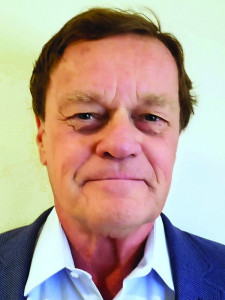
SCHWOERI: AIAC focuses on troubled companies, even deeply troubled companies. When Jeff reached out to us, I made a quick visit and decided it was something that was of interest to us. Once we get beyond the “this is something in our strike zone,” we take a look at the strength and quality of the customers, and Vermont Aerospace had A+ customers with good relationships with those customers.
Next is the management team and the employees, and it seemed to me they had a very strong and committed management team. Jeff had done a good job of weeding out some of the weaker players in addition to bringing in a new manufacturing manager.
And third is, “What shape is the equipment in?” That was my major concern. They had a lot of older pieces of equipment. I got myself comfortable with what they had and saw that it could work, so we decided to step in and make an offer.
REECE: Was there initial due diligence?
SCHWOERI: The most important is the financial structure. Jon and I worked together to put together a 13-week cash flow and an annual forecast to see whether this thing was going to work or not. A lot of times the due diligence is spent verifying the financial assumptions and analyses that have been done by the management of the company.
We also had to talk to the customers to see what their appetite was for continuing on, and based on my experience, that is also a selling opportunity for the company. They can say we’re going to invest in equipment and people and systems, and it’s your first opportunity to sell them on continuing to do business.
The due diligence probably took about five days of intense work, and then some follow up work by Jon on the financials.
REECE: What offer did you make and how did you structure it?
SCHWOERI: We structured it within the parameters that the bank had laid out in terms of what they wanted to get out of the transaction. We put in some equity and a provision to allow the vendors to recover some of their payables. Those are the three principle components of our offer.
REECE: What type of a deal did you have to strike with the vendors and trade payables?
SCHWOERI: We issued 10-year notes, and that was enough to convince them that our offer was viable.
REECE: They’ll get 100% payout over the 10-year time frame?
SCHWOERI: We limited it to a fixed amount, which was somewhere around 60% of their outstanding.
REECE: Was there a requirement that they continue as a trade vendor?
SCHWOERI: No requirement. My experience is that everyone sees the light pretty quickly and that it’s in their best interest to continue with the company. There was only one large vendor that didn’t continue with us.
REECE: Let me turn to Kristin. What were the legal obstacles for the buyer?
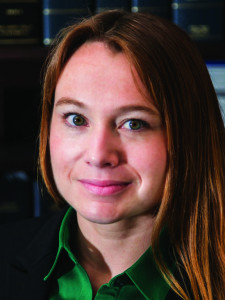
WAINRIGHT: There were a couple of different issues here. You had a corporation that was owned by an ESOP, not having the traditional board of directors that you deal with in most corporations. And there was an independent director to handle the sale and the ultimate dissolution of the entity. In terms of making sure that the seller had properly approved this sale, the ESOP had to be terminated, which means that the shares were distributed to all of the employees. Then you had a shareholder meeting where I think 80% showed up and unanimously voted to sell the company.
Another concern I had as buyer’s counsel was that you knew that the seller was going to be dissolving. There was no true cash consideration going to the seller in this case, so you do not have the typical protections that you have in many asset deals: indemnity, escrow, pull backs, those types of things. As Larry had said, the deal was structured as an assumption of debt, a payoff of part of the seller’s debt and issuing the notes to the creditors. In addition to that, we had to work within what we knew were going to be the confines of the seller’s dissolution process post-closing, for example the notes to the creditors were considered an asset of the seller that were distributed through that dissolution process.
REECE: Was the issue of whether or not to file bankruptcy actively considered?
WAINRIGHT: I do think that the seller’s counsel gave that significant consideration. As counsel for the buyer, the length of time that a bankruptcy would have required was not necessarily something my client had an appetite for, and I’m not sure that this seller had the resources to go through a bankruptcy filing.
REECE: Once you made the decision and closed, what changes did you feel were necessary? What else did you feel needed to be done to ensure the success of this company?
SCHWOERI: If we go back to the hierarchy of reasons why we bought the company, Jeff and I started working together to improve the on-time delivery performance for the customers. He had done a good job of maximizing the cash available which we then funneled to the suppliers, which then allowed us to get the materials to make deliveries to the customers. We started building the customer trust even before we closed the deal by working together. We changed the company’s focus to being a customer-oriented company. The customers really recognized that.
Number two, Jeff brought in a really strong operations manager. That individual has continued to perform excellently for the company. We also have upgraded the IT system, which was a big bone of contention with the major customers. They wanted to know how the scheduling system works, to see for themselves where bottlenecks might crop up and what we were going to do about them. Immediately after closing, we also refurbished all of the equipment so we could get it working productively.
Finally, the other thing I always do in my companies is install a gain sharing program for all of the hourly employees. Jeff set the table nicely. We had a good motivated group of employees. We layered in a productivity-based incentive program. The workers have done terrifically, and each of them receives a bonus check every month. That has been helpful in increasing the productivity there.
REECE: How is the company doing today?
SCHWOERI: It’s a grand slam home run. It started making money the first week, and it hasn’t stopped. We’ve been on an upward trend ever since we bought the company. We have increased sales with all the major customers and have engaged several new customers.
General Electric, which is a very tough customer, called us to ask us what we were doing. They said the on-time delivery was 95% plus and wanted to know what we’ve done to make such a drastic improvement.
That core philosophy that Jeff and I put in place to take care of the customers and be customer-oriented has carried the company to a great level of success. We had a lot of support from our bank in giving us comfort we’d have enough cash to make it through. But we really didn’t need to use much of the line, but it was still helpful.
This has also been a success for the employees. We saved 50 or 60 jobs and added 10 or 15. It’s located in a small town in rural Vermont, so it has really meant a lot up there.
REECE: What made this turnaround successful when others do not work?
SANDS: In all turnarounds, it’s about precision: having a tight plan put together quickly and being able to execute on that plan before bad news can catch up to you. In this one, what makes it stand out is there was a shock. A surprise death. Everyone was completely shocked and willing to pay attention. When it’s a slow decline into bad results, everyone holds onto their delusion. The vendors think they can continue charging too much; they all have false ideas. The shock made everyone wake up and pay attention and ask what they can contribute. They all did it. At the end of the day, it was everyone else that made this happen — the whole stakeholder community.
VERBECK: I’ll focus on the financial perspective. The capital structure and financial discipline that was put in place at the acquisition were extremely helpful. We had relief from current payables, so from a balance sheet perspective that was helpful. We did a cleanup of the inventory and the inventory systems that weren’t working, so we were able to get a handle on that quickly. The decisive action by the team made a positive difference, making it a successful turnaround. The employees were willing to change; the controller, for example, was there prior and is still there now. They all stepped up and were all willing to change and make improvements.
SCHWOERI: I think we identified a winning strategy along with the management team, which was to be totally customer-focused and improve our on-time delivery. That translated into gaining trust with the customers. To me, every one of these turnarounds requires a good loyal set of customers. You can’t make it work unless you have good customers. Secondly is the team and this team was committed. They put the past behind them and looked forward to see how they could make the company be a success. And we all worked together for the benefit of the employees.
WAINRIGHT: In addition to what everyone else has touched upon, one thing that made this deal stand out was the community support. All along the way there seemed to be support for this transaction within the community. That made the process go much more smoothly than it could have gone otherwise.
REECE: This was quite a vision from the beginning to the end. The vision to me is something that was lacking from other turnarounds.
SANDS: This is what I love to do. This is what I wake up wanting to do every single day if I could. It was a fabulous experience. It moved quickly, and there was lots of pressure, but, in my opinion, that just helps everyone focus and clears away a lot of the distraction.
VERBECK: I think the teamwork and decisive action by everyone to work quickly for [the] common cause made this a unique experience and a positive turnaround.
SCHWOERI: As well as having a good team of employees, we also had a good team working on this project. As Kristin was talking, I remembered how many problems there were with the ESOP attorneys, and the seller’s attorney was difficult to work with and she did a great job of guiding us through this. Jeff set it up, Jon did a great job of analyzing the financials and Kristin worked really well on the legal side.
The other issue this just underscored for me is how important the investors that are saving jobs and adding jobs are. It’s so important. I’ve done this so many times over my career, and I’m so thankful that we could step in and make this a big success and have an impact on all the folks that worked there and on the community.
